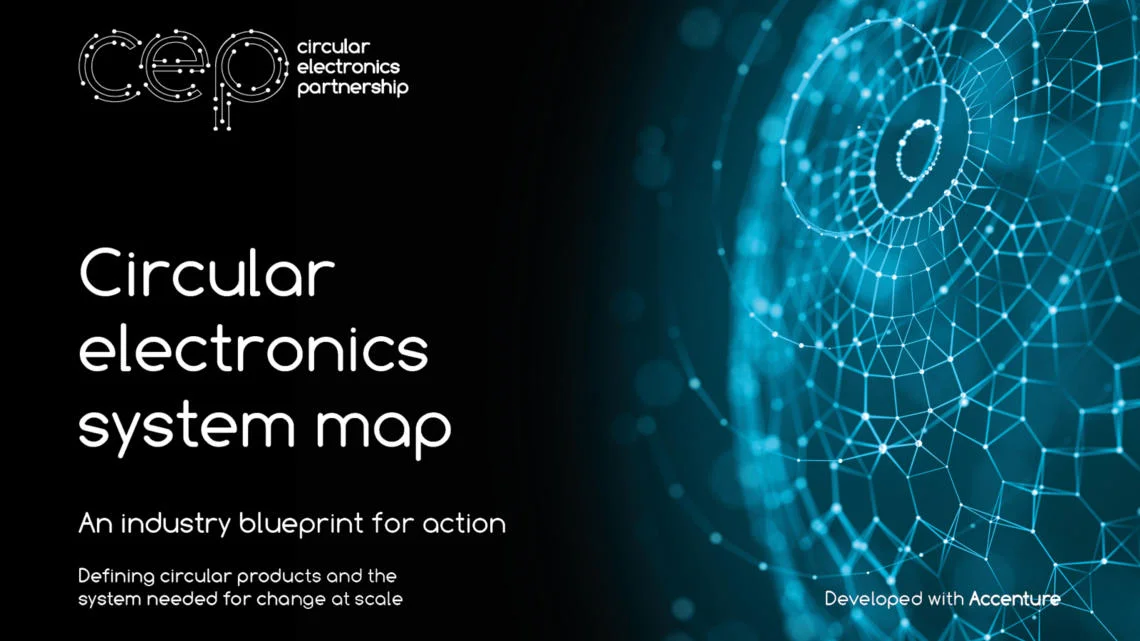Geneva, 29 September – Last week, the Circular Electronics Partnership (CEP) released an industry blueprint for action, developed collaboratively by 28 member companies and six partner organizations, including the World Business Council for Sustainable Development (WBCSD). The ‘Circular Electronics System Map’ sets a much-needed common understanding of what circularity means for the electronics sector and how we should define circular electronic products and services. This new blueprint guides businesses and other relevant stakeholders in their efforts to build a circular electronics industry by 2030.
While our modern world relies on electronic products, their production, use, and end-of-life treatment have many unintended environmental and social consequences. Electronic waste (e-waste) is among the fastest growing waste streams globally, 80% of which is not properly collected and treated.
Global e-waste has an estimated material value of USD $57 billion – higher than most countries’ GDP. Meanwhile, the industry is facing economic challenges such as supply shortages of indispensable materials. The circular economy represents a pathway to mitigate these concerns and brings financial opportunities to companies that can tap into the value potential of e-waste.
To support a coordinated transition to a circular economy in the electronics industry by 2030, CEP was founded in 2021 by six leading electronics organizations, including WBCSD. Since then, company members and partners have been collaborating on multiple projects to address the systemic barriers to this transition, as identified in the CEP Roadmap. The development of the new industry blueprint was essential for the collective understanding of what circular electronic products and services really are.
The blueprint aligns with existing circularity measurement frameworks, such as the Circular Transition Indicators, in recognizing three key attributes of a circular electronic product:
- Made from verified circular resources;
- Designed for effective and efficient circular use and recovery down the lifecycle;
- Used based on circular principles and actually recovered at the end of their life.
This definition makes it evident that products can only be as circular as the system they circulate in. While there is a clear need for products that can be easily reused, remanufactured and recycled, a system that allows products to flow through the different value chain stages is currently not in place. Therefore, products designed for circularity still end up in landfills, suffering an equally linear demise as any other product.
Forward-thinking companies need to collaboratively build a system that closes the loop on products and materials and prevents them from leaking out of the value cycle. This blueprint outlines 12 systemic enablers to help businesses collectively build a circular electronics industry.
“In order for the electronics industry to become circular, we need to think at system, not just product level. This blueprint provides much-needed alignment for the sector. As a unique cross-organizational collaboration platform, CEP enables businesses and partners to collectively provide a shared vision to accelerate circularity for the electronics sector.” Diane Holdorf, Executive Vice President, WBCSD
“Accenture believes that technology, human ingenuity and the revolution in ESG data open up enormous opportunities for circular electronics. We are proud to collaborate with the Circular Electronics Partnership and these leading companies, and look forward to helping drive scale and speed to create value, impact and competitiveness for those who lead.” Wesley Spindler, Managing Director & Global Circular Economy Lead, Accenture
All electronics industry stakeholders, those in the broader circular economy landscape, and members of the scientific community and public sector are invited to contribute and sharpen the blueprint in the coming years and jointly make our vision a reality.
For more information, please contact Carolien Van Brunschot, Lead Secretariat, Circular Electronics Partnership, at van-brunschot@wbcsd.org.
WBCSD news articles and insights may be republished in accordance with the Creative Commons Attribution-NonCommercial-NoDerivatives 4.0 International Public License, and in accordance with our Privacy Policy. All Content must be featured with due credits.

